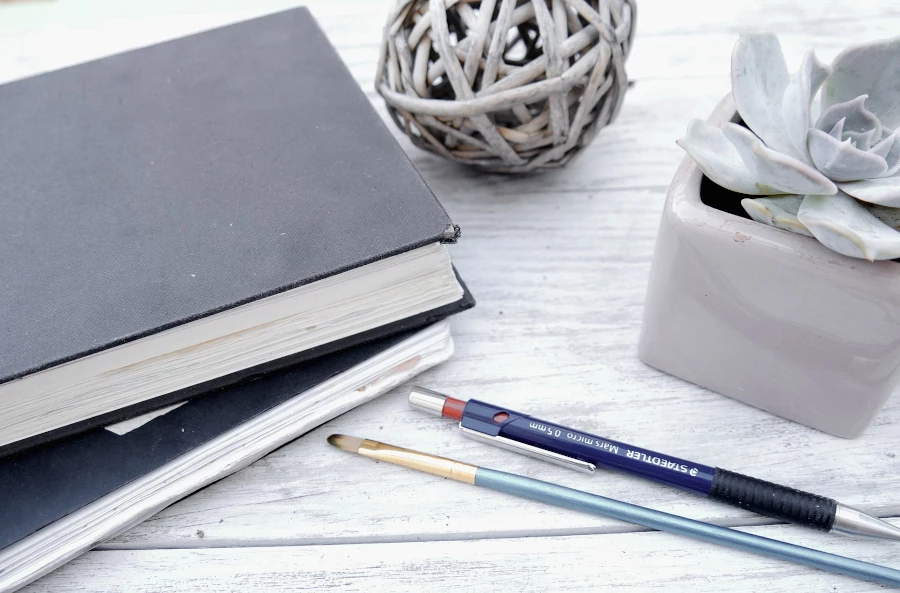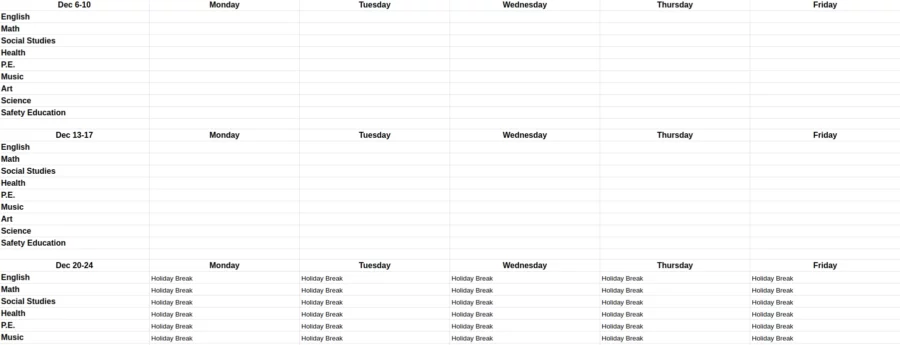Knowing where to start with your homeschool tracking and homeschool portfolio building is the key to staying organized all year long. Here in Pennsylvania it is required for every homeschooling parent and it can be super overwhelming at first. Not every state has guidelines like mine. However, I recommend all homeschoolers do it for no other reason than to have the information available if needed.
If you’ve been homeschooling for awhile you may know that Pennsylvania has some pretty strict homeschool laws. If I’m being honest we actually considered moving to a nearby town in Ohio just to have less strict laws regarding homeschooling.
While moving just for easier homeschooling regulations is not really necessary, that’s just how overwhelmed I was at first about homeschooling in Pennsylvania. Luckily, after some research and talking to my friend who homeschools in the middle of the state, I figured out it’s really not that bad.
While a move to Ohio may still be in our future for other reasons, I’ve made the decision that regardless of what state we live in I will be using PA as a guideline for all my homeschooling record keeping. Why? Because it is in depth and if a state tries to scare me into sending my kid to school – which some states have been known to do – I will have all my records and proof that my child is getting a quality education at home.
So, if you are new to homeschooling and live in Pennsylvania I am sharing my in depth guide for you to utilize in your own homeschooling.

Read Your State Laws
First and foremost, always read the homeschool laws in your state for yourself. While there are loads of helpful guides and information on the internet you want to make sure you understand the law as much as possible.
This will keep you from having to deal with unnecessary inquiries and issues with your state. Use the HSLDA’s website for additional details. I also recommend getting an HSLDA membership for their official forms.
Not in all cases, but in some, if the state realizes that you utilize the HSLDA they may not pursue inquiries into your homeschooling. The school superintendents just don’t want to mess with parents who have a team of lawyers behind them. It gets messy for them and sometimes brings publicity they don’t want.
Now, just because you have a team of people who know the homeschool laws inside and out doesn’t mean you get to slack on following the laws in your state. So, follow the laws, report what is necessary, and keep records.
Homeschool Tracking
Now that you know your state laws on homeschooling, make a list of things they want from you at the beginning and/or end of each school year. This will help you to remember to organize these items throughout the year as well as help you build your portfolio later in the year.
Create A Spreadsheet
The first thing I did was create a school year spreadsheet. Each month gets its own sheet. The first column is where I label the subjects my child is required to learn, then each column after that is a day of the week. Below is a screenshot of what that looks like for me.

It’s a quick place for me to list out everything my child learned each day. I add a short explanation of every video, book, art project, activity, or worksheet that my child did.
Additionally, if we did some baking I add that my son spent time learning units of measurement. If we went for a hike, he learned about different trees or animal life. If we went to a museum or zoo, he learned about habitats, history, science, and animal life.
The spreadsheet is my main hub of everything my child learned each day of schooling. Now, this does not get put into my portfolio, it is not required. I do this more as journal keeping so I can build up my synopsis in each subject that will be added to my portfolio at the end of the year.
Remember, we are relaxed guided unschoolers so this spreadsheet is essential for me to label exactly what he learned about even though it doesn’t feel like school to my son.
Create Booklists
Next, I have dedicated spreadsheets for my son’s reading. We utilize Amazon Kindle Unlimited to get books on my tablet. I can find books on most of the topics he’s learning about and it’s a great way to reinforce what he’s learning through the lesson plan and the video’s he’s watching.
Book lists are another great way to prove your hours or time spent homeschooling. Especially while your child is learning to read. Also keep in mind they do not all need to be educational books.
Reading is reading and purely fictional books are perfectly fine to add to your book lists. As your child gets older it’s a good goal to have your kid read at least one fictional book a month. It’s a great calm down time for them after dinner or before bed.
This book list is going to be helpful later during reporting because you can add the books to any subject that applies. So, my son’s Sarah and Duck books are great for English. However, My Amazing Body is great for health class and Science. On The Space Station is great for Science.
If you have a K-2nd grade student, many authors ask YouTube channels to read their children’s books on video, you can add these to your book list as well. It’s also a great way to find new books your child will be interested in, then you can purchase them knowing your child will love it.
Get A Notebook
I have a small homeschool notebook. This comes in handy for trips out of the house or when you are away from your computer. Just carry it with a pen and write down every activity or the things that your child is learning so you can record it later.
This is just an extra little thing I do to make sure I’m recording everything that is going on in my child’s education. It’s not required if you happen to have a great memory you likely won’t need this extra step. If you are like me and have ADHD it’s helpful to have this little safety net for when you aren’t at a computer all day to record everything.

Get a Document Box
The final thing you will need is a document box. This can be any box, I use something like this. In this box you will put worksheets, tests, projects, and every paper activity you can use to prove your child’s completed work.
Your evaluator will likely want to see examples of work, pictures of projects your kid did, and pictures of your kid participating in the projects or activities through the school year.
This document box will keep everything in a safe place so that at the end of the year you can go through and show the progress your child made. You will likely not need to send everything but rather the start and finishing products so you can show your child advanced educationally.
End Of The Year Prep
Through the school year you captured every activity, video, book, and project your kid did. Now you get to go through all of those things and create your portfolio to give to your evaluator. Let’s go through the end of year and portfolio building steps.
Find Your Evaluator
First, you will want to find an evaluator. If you are involved in groups or know other homeschooling parents who use a similar method to what you do you may want to ask them for their evaluators information.
Second, you hire your evaluator, they work for you. So if they aren’t going to work out for you, you can simply not use their service and find a different evaluator.
I recommend finding an evaluator that understands your homeschooling method because they are going to be supportive of what you use to prove your work. They will also understand how to talk to your kids to make sure your kids actually learned what they needed to learn that year.
In the process of finding your evaluator, ask them what they need in your portfolio. They may not want a lot of worksheets and instead ask for a few pictures, a couple of worksheets, and a synopsis of what your kid learned in each subject.
Get Your Portfolio Ready
Now it’s time to start putting your binder together. You don’t need a huge binder for this and you only really need a binder to make it easier on you. Some people use a file folder and that’s it.
Additionally, your evaluator may just ask for you to scan and email everything to them in a zip file. You may not need a binder at all. You will find out everything you need for your portfolio from your evaluator.

Get Your Calendar Ready
In your portfolio you will add a calendar where you will mark off every day you did schooling. Here in Pennsylvania, you need at least 180 days of schooling each year. Other states are less so make sure you check your state law.
Create Synopsis Of Each Subject
For each required subject you will need to create a brief one page synopsis or log of the things your child learned. This is where your spreadsheet, notebook, and book list comes in handy.
In your synopsis you will list out the different topics in each subject in a one sentence overview and list corresponding books.
For example, this year in Science, I may say something like this:
- Student learned about plants, their lifecycle, differences between fruit, vegetable, vine, tree, and flower plants.
- Student learned about different types of weather, seasonal changes, and clouds.
- Student learned about moon phases, planets in the solar system and our sun.
- Student learned about habitats of different types of animals, where and what they live in, how they travel, migratory patterns, hibernation patterns, and what certain animals eat.
While there will likely be more that is covered this year, this is a small example of the things I’m likely to report in my synopsis of what my child learned.
Add Corresponding Books
After each synopsis you will add your book list that was used for that subject, this could be a separate page or even on the same page as your synopsis depending on the subject.
Just list out each book that corresponds with what your child learned. All works of fiction can be added to your English studies.
Pick Your Sample Materials
After you add your book lists now you can pick your sample materials. These can be tests, worksheets, and photos of projects being done. I would say no more than four sample sheets per subject should be needed.
Your evaluator may set a guideline for you to follow on what to send them and what they want to see though so check with them on what they expect to see with sample material.
Include Any Required Testing
Here in Pennsylvania standardized tests are required for 3rd, 5th, and 8th grades. You can find out more about the approved standardized testing here.
You will want to add any standardized testing results to your portfolio for your evaluator.
Prepare For Evaluation
Your evaluator will likely want to speak to your child to ask them about the different topics they learned about that year. It’s because of this that I recommend sitting down with your child and practicing a few questions with them. This will make it more comfortable for your kid to talk to the evaluator.
For younger and shy kids, you can explain to your child that they will be talking to a friend of the family and they may ask questions about what they’ve learned this year. For older kids, you can explain that the evaluator is a teacher who checks their work and speaks with them about what they learned.
If your child is non communicative, you may want to ask the evaluator if they could send you a list of questions so your child can write down their responses. You can take pictures of them responding to the written questions.
Ask your evaluator and talk to them about their expectations. Remember, your evaluator works for you, not the state, so if the evaluator is unwilling to work with your needs you can find another evaluator.
Send Your Homeschool Portfolio To Your Evaluator
Once you have everything together send your portfolio off to your evaluator. They will go through it and schedule a phone call with you and your child. Once they see the completed work and speak with you and your child about their school year, they will send you their certification.
This certification is basically a letter that says the student met the state guidelines for education this year. You will then send that certification to your superintendent by the due date, June 30th here in Pennsylvania. Be sure to check your specific state laws for information on if you need an evaluation or not and when to send the certification in.
Homeschool Tracking and Homeschool Portfolio
As mentioned previously each state has their own laws and guidelines to follow, you will want to check with your state laws. In Illinois, for example, none of this is required. While I highly recommend that you do keep some sort of portfolio no matter what state you are in, an evaluation or in depth tracking just might not be required.
Even if you happen to be in a strict homeschool law state, it’s probably not as bad as you think it is. Read your state laws, talk to your evaluator, and talk to other homeschoolers in your area.
Do you have any advice for doing homeschool tracking or creating a homeschool portfolio? Let me know in the comments below. Follow us on Pinterest for more like this and pin this to your favorite homeschooling boards.
![]()